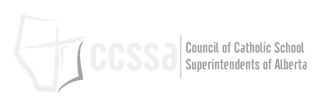Note: This article is part one of a series by Brett Fawcett on the history of our Catholic schools.
Introduction
When you belong to an institution with a history that you are proud of, it’s easier to be passionate for that institution. It is ennobling to carry on an honourable legacy. Conversely, it can be hard to get excited about something if you don’t know much about it.
I say all this because I get the impression that most people in Alberta do not understand the historical reasons why section 17 of the Alberta Act 1905, itself rooted in section 93 of the Constitution Act 1867, enshrines a right to fully publicly funded Catholic schools, formally called “separate schools”. I’m convinced that the reason many people are apathetic about the existence of separate schools–and the reason some people passionately want them all shut down–is because of simple historical ignorance about why that provision exists.
G.K. Chesterton once said that if you find a fence and can’t tell why it’s there, your first action should not be to simply tear it down, but to first figure out why it was set up in the first place. In the case of separate schools, however, the story you normally hear about why they were instituted is incorrect.
The typical claim is that Canada only protected separate schools as a concession to its French-speaking population so that it could win their support for the cause of confederation. Now that Quebec has largely lost its faith and, since 1998, has not had separate Catholic education, this concession (critics say) has outlived its usefulness, and we can therefore safely get rid of the anachronistic institution of having the government run two school systems.
This, as we shall see, is oversimplified at best and outright false at worst. It would take an entire book to flesh out the true story of how Catholic schools came to have the status that they do in Alberta. However, a (relatively) quick overview of the true story may serve to not only dispel that myth, but also to reveal that section 17 did not only emerge out of political calculation but also out of a profound understanding of justice, freedom, and diversity in the face of racism and oppression.
The First Separate School
In 1791, the British Parliament passed the Constitutional Act, also called the Canada Act, which more-or-less created the provinces of Ontario and Quebec, then called Upper and Lower Canada, respectively. Laws regulating education in both provinces came soon afterwards. Before this, churches, religious orders, and missionaries had largely been in charge of teaching children; now, the government took a more active role in providing and controlling schools.
In 1816, Upper Canada passed the Common School Act, which provided for government-funded, non-denominational schools–what we would today call “public schools.” It must be recognized that, historically, the common school system developed in part out of a desire for the government to make populations more culturally homogenous, and thus more easy to control. Part of this means using the public school system to assimilate minority groups into the dominant worldview. (Charles Glenn argues in The Myth of Common Schools that common schools essentially took over the role once played by national churches.)
However, Upper Canada also funded some Catholic schools because of one man: Bishop Alexander Macdonell.
Before being raised to the episcopacy, Father Macdonell had been a priest in the Scottish Highlands who had successfully petitioned the British government to recruit his parishioners into their army. Father Macdonell thus created the first Catholic regiment in the British army since the Reformation, and was the first Catholic chaplain in the British army since the Church of England broke from Rome.
Father Macdonell and his men showed so much valour fighting for Great Britain that they were rewarded with land in Upper Canada, where he was made the first bishop of Kingston. The government was so grateful for his service that in 1816, the same year the Common School Act was passed, he was allowed to appoint four schoolteachers, whose salaries would be paid for by the provincial government.
His continued efforts to fight for support for Catholic education would result in him getting a royal charter to establish a secondary school called Regiopolis College in 1839. The following year, he died in Great Britain, where he had gone to solicit more funds for the College.
Right away, we can see that separate schools in Canada were initially founded by a Scottish bishop ministering to a community of transplanted Highlanders as a reward for his heroic service to the British Crown. The idea that this was just a concession to ambivalently loyal French Canadians is off to a shaky start.
Meanwhile, in Lower Canada, the Church provided most of the education, particularly for the poor. In 1801, legislation was passed instituting a “Royal Institution for the Advancement of Learning.” This Institute would be in charge of state-run schools where teachers would be paid by the government.
Bishop Plessis of Montreal organized a campaign against these schools, fearing that they were an attempt by the Crown to Anglicize and Protestantize the French Catholic population. The fact that the Royal Institute was the brainchild of an Anglican bishop who also happened to be its president only bolstered his case.
In response, an 1824 law allowed church councils (fabriques) to run their own elementary schools, which would be funded entirely out of parish revenue and would receive no money from the government. This allowed a parallel Catholic school system to operate alongside the state schools, though neither were fully “free” to parents.
In 1829, the Assembly School Act created something close to the modern public school system: Elementary Écoles de Syndic which were controlled by elected trustees rather than priests. The Church strenuously opposed these Legislative Assembly Schools, and, after gaining some concessions (such as an 1830 amendment allowing priests to be elected as trustees), were ultimately successful in having them shut down in 1836.
There was therefore precedent in both Upper and Lower Canada for a situation in which the government operated vaguely Protestant common schools alongside their church-run, legally recognized counterparts. After the tumultuous rebellions of 1838-1839 and the governmental restructuring that occurred in their wake, it was an open question whether those arrangements would continue.
Brett Fawcett teaches for Elk Island Catholic Schools at the Chesterton Academy of St. Isidore, and is a doctoral student at the University of Calgary.




